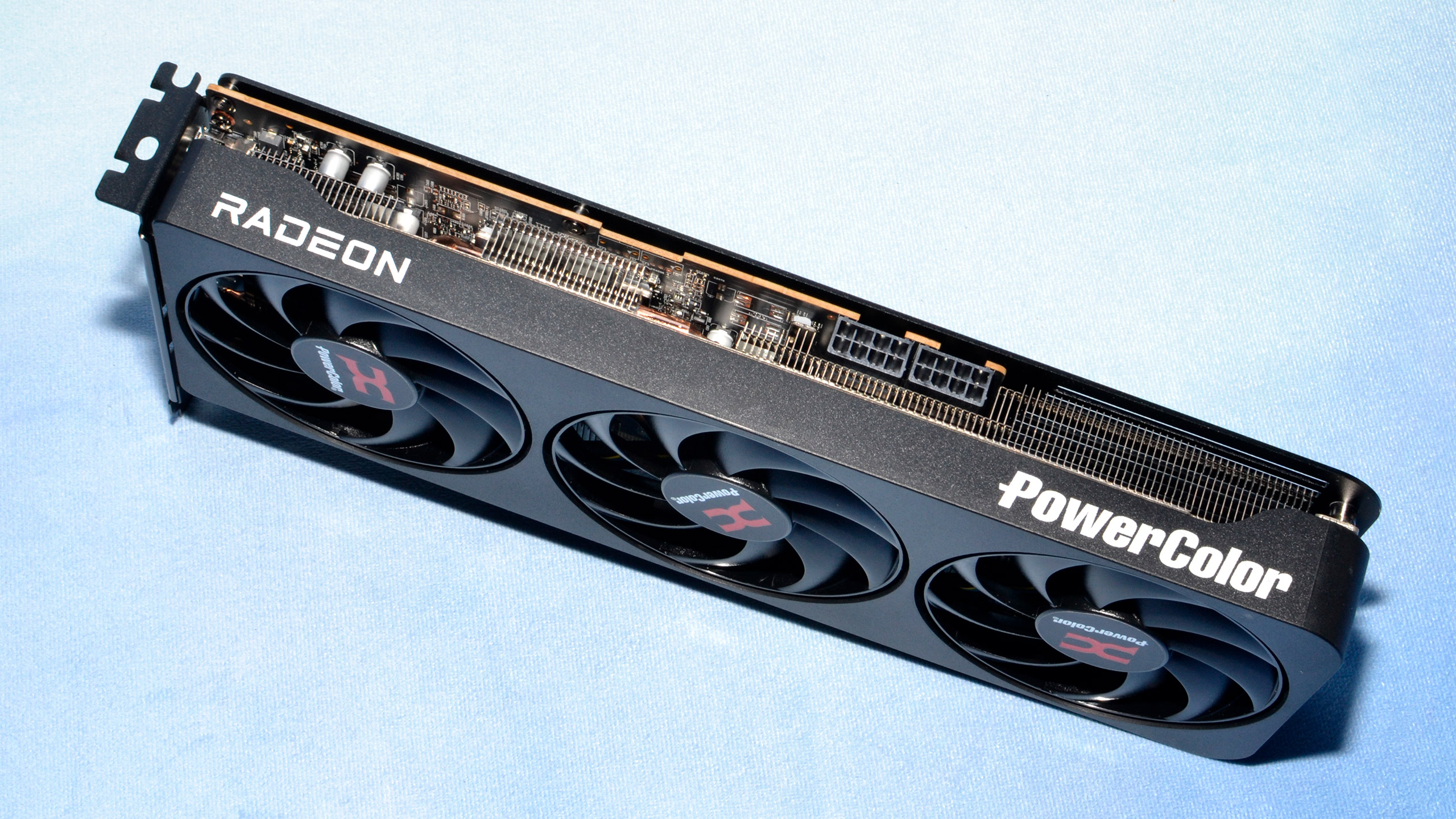Radeon RX 9070 gains 25% performance in synthetic benchmarks using RX 9070 XT vBIOS
More power equals more performance.

In an attempt to squeeze more performance out of their GPU, a user on Reddit has successfully flashed the BIOS of a Radeon RX 9070 XT onto their non-XT variant. As per a post by u/noVa_realiZe on the r/Radeon subreddit, they were pretty satisfied with the results, as their PowerColor RX 9070 Reaper gained an uplift of 25% in synthetic benchmarks, and around 8-12% while gaming.
The user notes that they performed the vBIOS flash using an open-source tool published on Overclock.net by user Benik3. If you’re interested in the full flashing process, you can follow the post here. Keep in mind, however, that flashing a GPU with the BIOS of another model may void your warranty and can potentially brick your card.
According to testing done by u/noVa_realiZe, the performance gains from flashing the BIOS were immediately noticeable in synthetic benchmarks. In 3DMark Steel Nomad, the stock non-XT card managed a score of around 5,821, while the same card with the XT BIOS went up to 6,461. After some more tinkering with the voltages and memory clock speeds, the card peaked at 7,277, which is a notable improvement over stock performance.
The performance uplift is reduced when it comes to actual gaming, though. In Cyberpunk 2077 at 1440p with a mix of ray-tracing settings, the undervolted stock card averaged 70 FPS. After flashing and tuning the card, the same setup pushed averages closer to 78 FPS, with noticeable improvements to 1% and 0.1% lows.
The increase in performance is primarily due to the ability to feed more power to the GPU after flashing the XT BIOS.
Not the first example
Back in April, a similar attempt was made, where a community member at leading German website PCGH (PC Games Hardware) took an Asus Prime RX 9070 and flashed it with the Asus Prime RX 9070 XT vBIOS.
After successfully flashing the BIOS, they were able to raise its power draw to 317W (up from the stock 220W) and increase the boost clock frequencies to 3.1 GHz. This translated into a consistent 15-20% performance uplift in synthetic benchmark tests, while additional tuning and overclocking resulted in scores that outperformed the stock RX 9070 XT.
Get Tom's Hardware's best news and in-depth reviews, straight to your inbox.
It is interesting to know that the Radeon RX 9070 has a modicum of headroom to deliver more performance, but at the same time, these gains come with trade‐offs. This includes higher power consumption, increased heat, and a real risk of instability or damage, especially if the cooling solution and power delivery system are not adequate.
Follow Tom's Hardware on Google News, or add us as a preferred source, to get our up-to-date news, analysis, and reviews in your feeds. Make sure to click the Follow button!

Kunal Khullar is a contributing writer at Tom’s Hardware. He is a long time technology journalist and reviewer specializing in PC components and peripherals, and welcomes any and every question around building a PC.
-
valthuer I can’t help but smile reading this — it reminds me of the old days when I flashed my MSI Radeon HD 6950 back in 2011 to unlock shaders and effectively turn it into a 6970. That was one of the most satisfying “free upgrades” I’ve ever done. It’s nice to see that, more than a decade later, Radeon GPUs are still carrying on this tradition of BIOS flashing as a path to extra performance. Some things never change — just the card names and the power draw!Reply -
Lamarr the Strelok Seems a lot harder to overclock gpu's now compared to the olden days too. I tried OC my rx 570 and it did NOT like it. At all.Of course I think rx570 is just a hopped up rx480(?) so not much wiggle room there I guess.Reply -
mitch074 Reply
Not exactly - the RX570 is a neater engraved RX470, itself a cut-down RX480. My own reference model RX480 with aftermarket cooler did enjoy a slight undervolt and overclock (I managed to run games with the GPU running at 1300 MHz - close, but not up to reference RX580 freq).Lamarr the Strelok said:Seems a lot harder to overclock gpu's now compared to the olden days too. I tried OC my rx 570 and it did NOT like it. At all.Of course I think rx570 is just a hopped up rx480(?) so not much wiggle room there I guess.
RX5x0 Ellesmere used GloFo 12 µm, which was a refined version of GloFo 14 µm process, while retaining the same silicon surface area; same voltage but higher clock speeds, the RX580 was 3% faster than RX480 but drew 20 more watts. The RX570 had the same number of CU as the 470, but clocked much higher (both RAM and GPU) which made it much faster than its predecessors and OC models did beat the original RX480.
Note that binned RX580 GPUs were used to make the RX590 - so, OC potential for RX5x0 is limited, the best chips having been kept for that top of the line version.